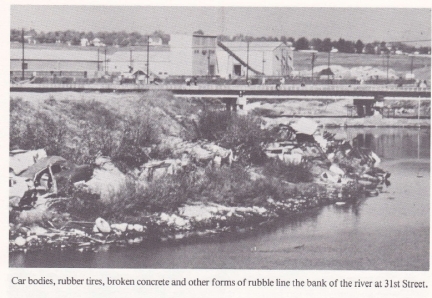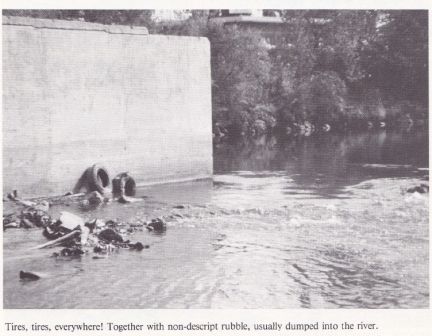Denver was
founded in 1858 at the confluence of the South Platte River and
Cherry Creek. At the time, it was only a small frontier town with
a few thousand residents. Early on, the town's drinking water
came straight from the South Platte River. After a few years,
however, wells were dug nearby to provide clean water. |
|
Denver in 1859:
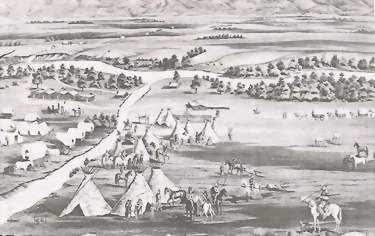
|
Image from http://www.us-coin-values-advisor.com/us-denver-mint.html
|
| During the 1860's and 1870's, the town grew
both in population and in size (see map below). Three important
drivers of this growth were gold and silver mining, the coming of
the railroad, and, more generally, the industrial revolution. In
1872, indoor plumbing came to Denver by using water from the Cherry
Creek. |
|
Denver in 1879:
.jpg)
|
Image from the David Rumsey
Collection (http://www.davidrumsey.com)
|
| |
| As the city continued to grow
and industrialize during the 1880's onward, the city's water source
continued moving further and further west - away from the increasingly
polluted city and into the Rocky Mountains. In 1886, the city's
sewers started sending raw sewage straight into the South Platte
River. Pollutants were also dumped into the river from the industries
that developed along the South Platte River (see image at right).
Denver's population continued to grow steadily throughout the 1900's
until about 1960 (see population growth chart below) and with this
growth, the pressures on the South Platte River and its tributaries
increased many fold. The river soon became the town dump - an open
sewer. And so begins "the Open Sewer Era" of the South
Platte River. |
Denver in
1889 (note industry from center left to top right):  |
| |
Photo
from the Panoramic Maps of the Library of Congress.
|

Data from the City of Denver
website
|
|
"The Open Sewer Era" of the South Platte River,
depressingly, lasted some ninety years (from the late 1800's
to the 1970's). During this time, the state of the river
worsened and worsened. Although Denver's stormwater system
- mostly consisting of open gulches - and sewage system
are separate, the river was "full of oil, grease, raw
sewage - anything unwanted, undesired, or in need of being
made 'invisible' ... few trees
survived along its banks, wildlife was non-existent, and
the substance flowing within the channel was so posionous
that it was harmful to the touch and lethal if ingested"
(The Reclamation
of the South Platte River Three Decades Later).
No one in the city or county
or state had any authority over the river - much less any
funding for it. No one cared about it and all were guilty
of dumping into the river:
|
- - Industries piped their industrial
waste and sludge into the river.
|
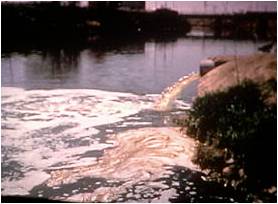
Above photo
from "The Reclamation of the South Platte River Three
Decades Later" (a report by the Greenway Foundation
and the Urban Drainage and Flood Control District)
|
-
- Adjacaent businesses
leaked a variety of toxins (including car oil, brake
fluid, gasoline, and other lubricants)
|
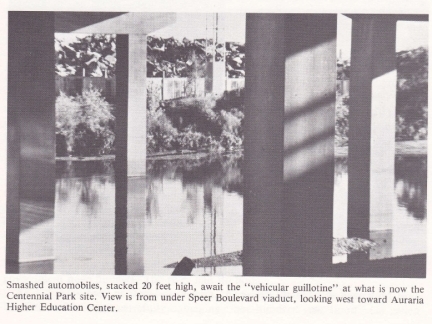
Above Photo from Returning
the Platte River to the People by Joe Shoemaker
|
- - The City (i.e. the Department
of Public Works) dumped snow, salt, rubble, concrete,
and trash along the banks
|

Above Photo from Returning
the Platte River to the People by Joe Shoemaker
|
- - Citizens dumped cars, tires,
garbage, everything and anything
|
|
| |
Above
and Below photo from Returning the Platte River to the
People by Joe Shoemaker |
| |
|
The dead South Platte
River and its tributaries may have remained Denver's toxic
dumping ground for decades to come were it not for one event
in 1965 that would immediately change the city's and the
people's relationship to the river forever... sort of.
Read
on to find out what happens!
|
|
|
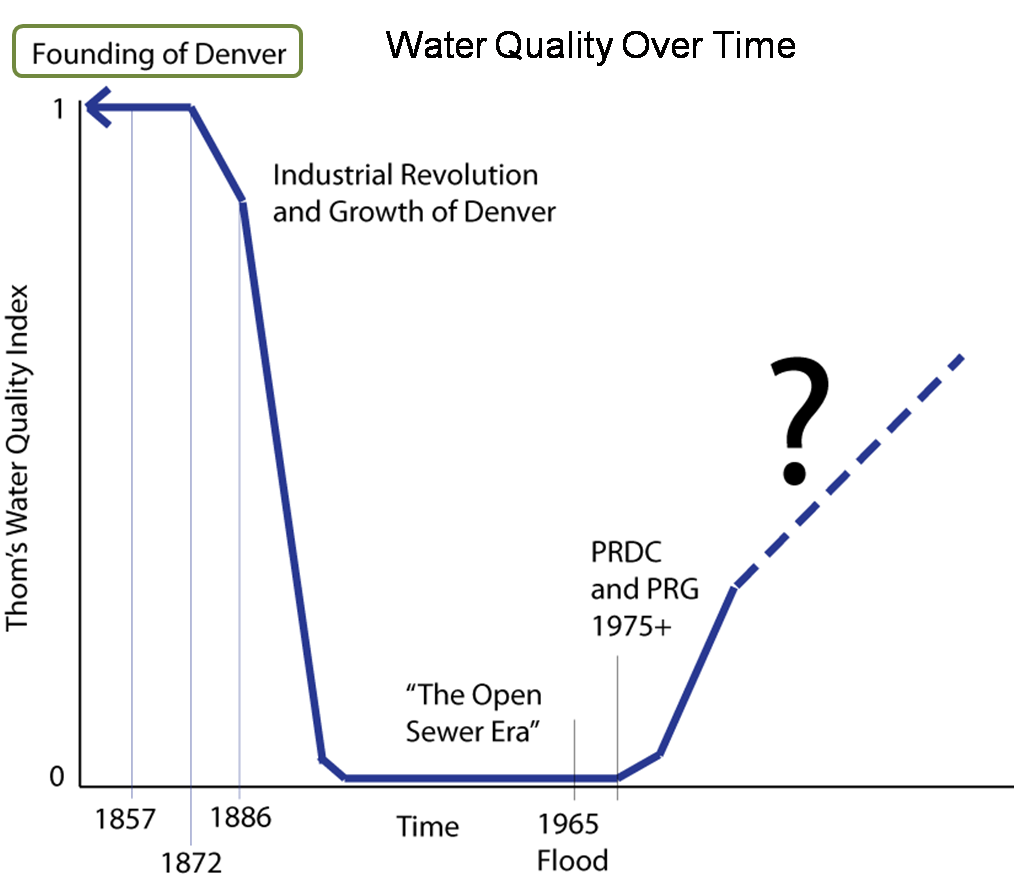


.jpg)






